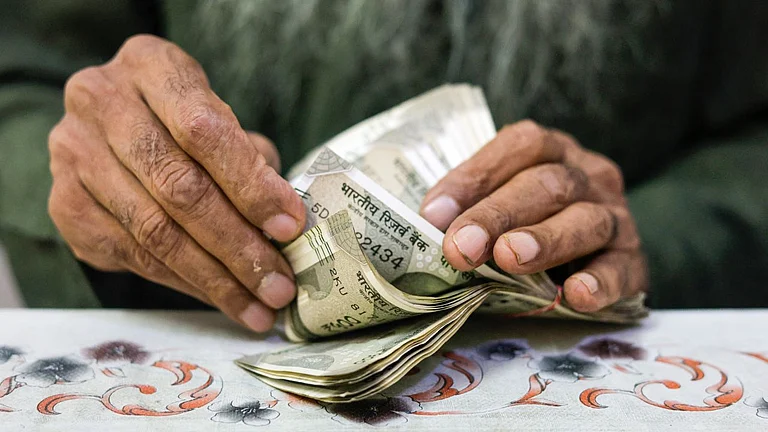Asian Markets rejoiced after the Trump 2.0 administration announced its decision to halt planned tariffs on Canada and Mexico. The planned tariffs could have potentially led to a trade-war-like situation, thus Trump 2.0’s move to halt them led to key Asian indices such as the Hang Seng and Nikkei opening higher on February 4. Closer home Indian benchmark indices also responded positively to the news.
The Nifty50 opened at 23,565.65, higher by 204.6 points or 0.88 per cent on the other hand the 30-share Sensex opened at 77,902.48 levels up by 715.74 points or 0.93 per cent. The total market capitalisation of BSE-listed companies grew to Rs 423 lakh crore from Rs 420 lakh crore. The Sensex closed at 78,583.81 levels, up by 1397.07 points or 1.81 per cent and the Nifty50 closed at 23,739.25 levels up by 378.2 points or 1.62 per cent.
What Caused The 1397 Point Sprint?
Several factors led to the 1397-point sprint the Sensex made on February 4. Key factors behind the surge include the decision to postpone tariffs, a declining dollar index, a larger trend seen in Asian markets and post-budget enthusiasm in the consumption space.
Trump-Sheinbaum Agreement
Earlier on Friday, January 31, US President Donald Trump announced that he would impose high tariffs on China, Mexico and Canada. However, on February 3, Trump and Mexican President Claudia Sheinbaum Pardo struck a deal over a phone call. As a part of the deal, Trump agreed to delay the 25 per cent tariff for 30 days which he had originally planned to implement, in return Sheinbaum promised to deploy 10,000 members of the National Guard at the US-Mexico border to curb drug trafficking. Indian markets have also taken to the news positively as benchmark indices opened in green on February 4.
Ravi Singh the Senior Vice President - Retail Research at Religare Broking Ltd told Outlook Money that the markets witnessed a positive trend on Tuesday following Trump's decision to delay the tariffs. He added that the delay in the imposition of tariffs is likely to drive a positive momentum in Indian stock market.
"Indian stock market witnessed positive trend after the decision to delay the implementation of the tariffs introduced by newly elected US president Donald Trump. The decision to delay these tariffs has significant effect on global economy. The delay has made market sentiments positive which will help drive a positive momentum in Indian stock market," Singh told Outlook Money.
Devang Kabra, the Co-Fund Manager at Wallfort PMS, told Outlook Money that the decision to postpone tariffs and a possible meeting between Prime Minister Narendra Modi and Donald Trump are welcome calls for the markets. He added that the move has boosted investor sentiment and has reduced uncertainty in global trade.
“Tariffs and trade wars are detrimental to global trade. The USA is an important direct consumer of the Indian Pharma and Software Industry and an indirect customer for a variety of manufactured goods like specialty chemicals, etc. Decisions on tariff postponement coupled with a possible Narendra Modi visit to the USA are welcome calls for the Indian Markets. This move has boosted investor sentiment, leading to strong foreign institutional inflows (FII) into Indian equities. Additionally, the postponement reduces uncertainty in global trade, which generally supports risk-on sentiment in emerging markets like India,” Kabra said.
Declining Dollar Index
The US dollar index witnessed a minor decline on February 4 as it fell to 108.55 levels, down by 0.44 points or 0.40 per cent. The US dollar index measures the value of the U.S. dollar relative to a basket of foreign currencies. Several factors contributed to the decline seen in the dollar index such as the halting of Trump’s tariffs. Additionally, US factory activity expanded in January for the first time since 2022.
The Institute for Supply Management’s manufacturing gauge rose 1.7 points in January to 50.9 indicating a brighter manufacturing outlook, as per a Bloomberg report. Which in turn raises expectations that the Federal Reserve will not cut rates at the March meeting. The Indian rupee also witnessed an improvement as the dollar index declined on Tuesday.
Kabra said that in the short term, the movement of the markets and the dollar index are inversely related, he added that Indian markets are likely to benefit if the rupee strengthens in the long term despite short-term weakness.
“In the short term, markets and the dollar index are inversely related. A quick movement in Dollar-Rupee influences the DXY movement which, in turn influences the dollar inflows into the markets, thus making it inversely proportional. The best case scenario for us will be if the Rupee gets strong in the long term in spite of the short-term weakness,” Kabra said.
Asian Indices Rally
A key reason behind Indian indices trading in the green was the broader rally seen in Asian markets after Trump’s decision to halt tariff hikes on Mexico and Canada for a 30 days period. Notably Japan’s Nikkei
opened at 39,078.66 levels up by 558.57 points of 1.45 per cent. The Hang Seng index opened 271.03 points or 1.34 per cent higher at 20488.29 levels.
NIFTY Auto Vrooms Post Budget
Key sectoral indices such as the Nifty Auto closed in the green for the fourth straight session. Additionally, Indian automobile companies have also had a decent December quarter with growth in sales, indicating sustained demand. The sectoral index has gained 2.91 per cent after the presentation of the Union Budget. Notably, the sectoral index closed at 23,535.05 levels up by 0.89 per cent on February 4.
The key reasons behind the rally seen in the automotive space include the measures announced by the Centre to boost agriculture through enhanced credit facilities which in turn are likely to bolster the demand for agricultural vehicles such as tractors.
Additionally the revision of income tax slabs which has made income up to Rs 12 lakh ‘tax-free’ may have also contributed to the rally in anticipation of increased purchasing power of the middle class. Kabra said that higher spending on consumer discretionary and automotive sectors is anticipated post the budget. He added that the post-budget rally in specific sectors is in anticipation of indirect liquidity in the hands of the middle class.
“After every budget, the sectors getting a higher budgetary allocation get into a bull zone. This time, there is anticipation of higher spending on consumer discretionary and automotive sectors due to the income tax reforms announced by the finance minister. Lower taxation will leave more money in the hands of the taxpayer for discretionary consumption. The post-budget rally in specific sectors is in anticipation of the indirect liquidity at the hands of Indian middle-class consumers,” Kabra said.















